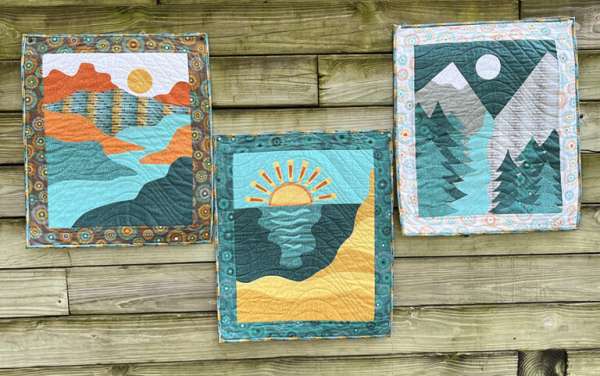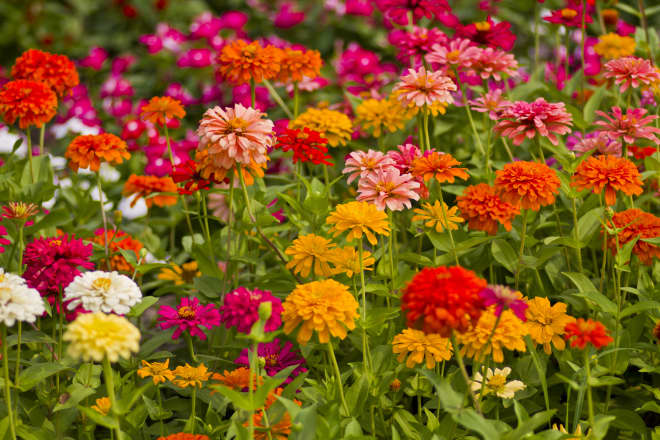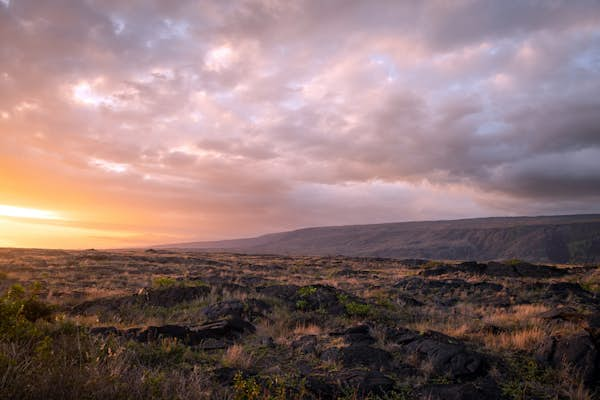The 12 best places to visit in Azerbaijan
The largest and most populous country in the South Caucasus, Azerbaijan spans high mountains and Caspian Sea beaches. Here are the best places to visit.

The largest and most populous country in the South Caucasus, Azerbaijan is often described as a “land of contrasts” and for once, the cliché actually fits. Sitting at the crossroads between Asia and Europe, this resource-rich nation is defined by its diverse geography, ranging from rugged alpine peaks in the Greater Caucasus Mountains in the north to broad Caspian beaches, lowland deserts and leopard-inhabited forests in the subtropical south.
While most cities can be reached from Baku in less than a day, visiting more remote villages and mountain areas can require extra patience and some off-road driving. Buses and trains connect the major cities and key destinations, but getting to off-the-beaten-path destinations may involve some forward planning and chartering a car and driver.
From the buzzing city of Baku to the remote wilderness of Hirkan National Park and everything in between, here are the top 12 things to do in Azerbaijan. 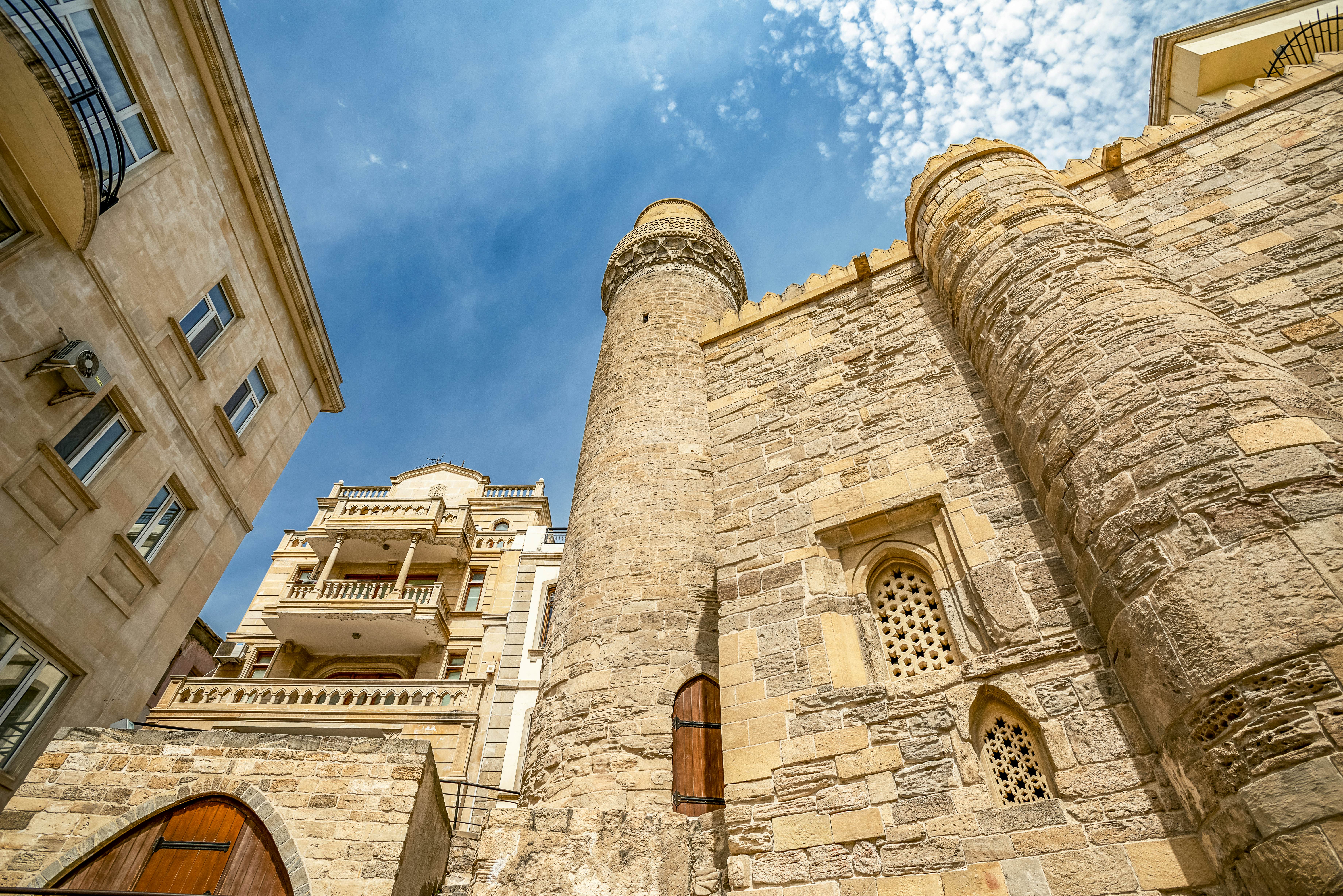
1. Baku
Best for museums and history
Bustling Baku is the capital city of Azerbaijan and the largest city in the South Caucasus. The discovery of vast fossil fuel reserves in the Abşeron Peninsula and the Caspian Sea has had a profound influence on this ancient seaport. The wealth from oil and natural gas has filled Baku with towering modern buildings and boutique-lined boulevards; few cities on the planet are changing so quickly.
To learn more about Baku’s oil-fuelled expansion, it’s worth visiting the National Museum of History of Azerbaijan. For a taste of the grand architecture that sprang up in the city after oil was discovered in the 1840s, check out the Azerbaijan State Academic Opera and Ballet Theatre, the Gothic-inspired Ismailiyya Palace, and the striped Institute of Manuscripts of Azerbaijan, built in 1901 as a boarding school for girls.
Around the corner, you can see the church-like Palace of Happiness, another oil-boom landmark built as a private home for oil magnate Murtuza Mukhtarov. Steps away, you’ll find the baroque City Hall, the castle-like House of Sadykhov Brothers, the Baku State Philharmonic Hall and the Western Caspian University building. Rising above the city are the shimmering Flame Towers - three of the city’s most futuristic skyscrapers.
Don’t miss Baku’s core – a labyrinthine maze of narrow alleys, repurposed Silk Road caravanserais (inns), ancient mosques, colorful carpet stores and faux-old houses blending in with the centuries-old stone architecture. At its heart is the Palace of the Shirvanshahs, Azerbaijan’s ancient ruling clan.
The city’s old town has been marked as a UNESCO World Heritage Site since 2000, protecting its buildings and monuments from the runaway construction seen in some other parts of the city. Walk through old Baku’s imposing stone gates to discover the heritage of the Shirvanshahs (Azerbaijan’s medieval rulers), timeless hammams (bathhouses), and some of the republic’s most enduring religious sites.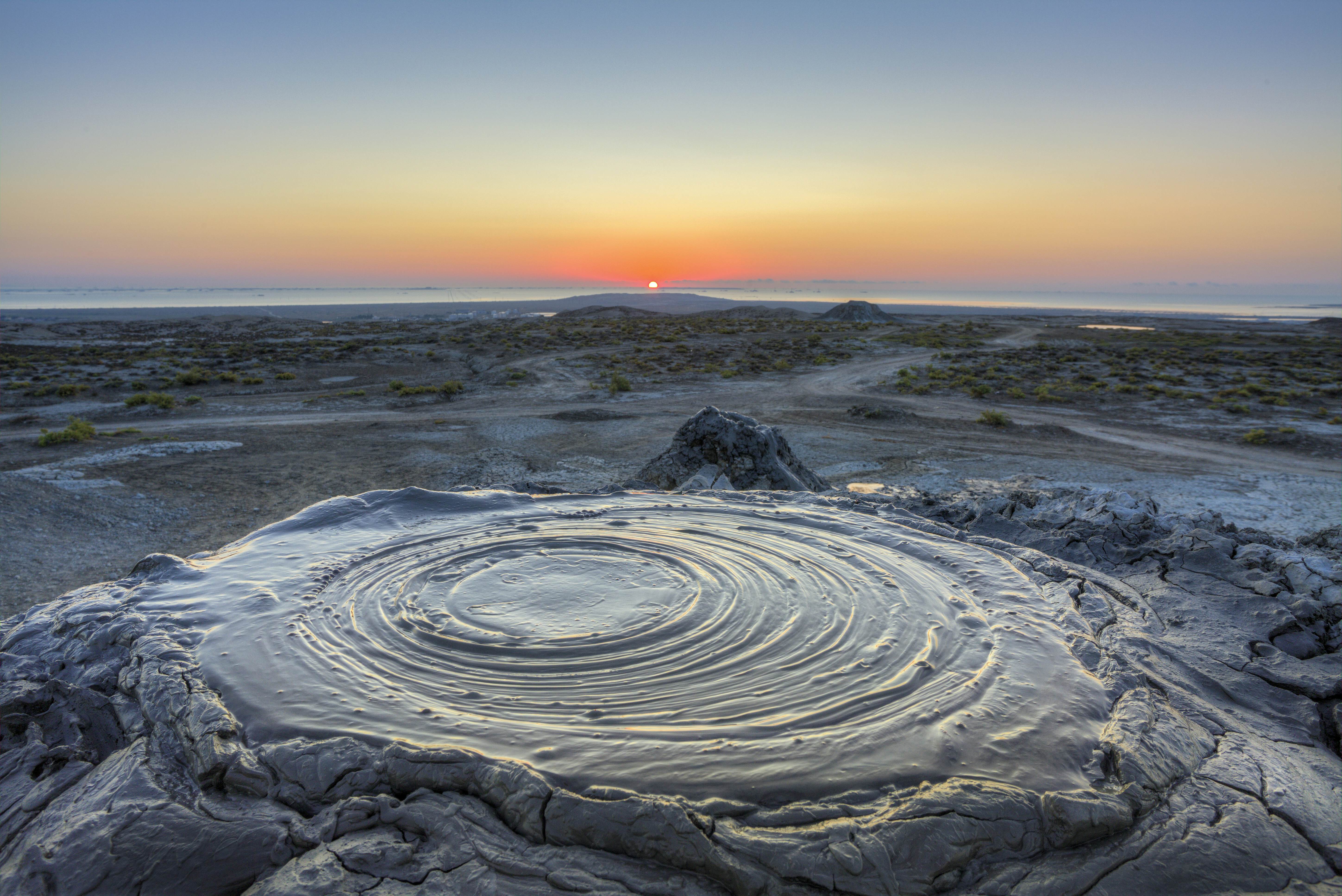
2. Qobustan Petroglyph Reserve
Best for a day trip from Baku
Roughly a one-hour drive south of the capital, the UNESCO World Heritage List-inscribed Qobustan Petroglyph Reserve protects a collection of petroglyphs representing hunting scenes, ritual dances and natural landscapes dating back as far as 10,000 BCE. Most of the petroglyphs are found in the Boyukdash and Kichikdash hills, inscribed on massive boulders covering a vast, protected area near Qobustan Town.
English-speaking guides are available onsite if you want to be led to less obvious stone engravings, and the excellent Qobustan National Park Museum will help you put the images into context.
Detour: Less than 10km (6 miles) from the museum are some of Azerbaijan’s famous mud volcanoes – bubbling mud pots created by geothermal forces. Seeing the mud erupt suddenly into life is weirdly fascinating and the site is an easy add-on to a trip to the Qobustan petroglyphs.
3. Abşeron Peninsula
Best for geology buffs
The scenery changes rapidly as you drive along the hook-shaped strip of land extending from Baku into the Caspian Sea. The Abşeron (Absheron) Peninsula is lined with popular beaches, forgotten castles and “burning” soils created by igniting natural gas, making for a fascinating day trip to the country’s easternmost tip.
Be sure to make pit stops at Ateshgah – a 17th-century Zoroastrian temple enclosing a naturally burning flame – and the Mardakan Castle, an imposing Shirvanshah fortress. Other highlights include the Qala Ethnographic Museum Complex, devoted to traditional life in Azerbaijan and the flame-licked slopes of Yanar Dağ (literally translating to “fire mountain”).
Detour: At the tip of the peninsula, Abşeron National Park protects coastal grasslands and beaches that provide a home for gazelles, birdlife and seals.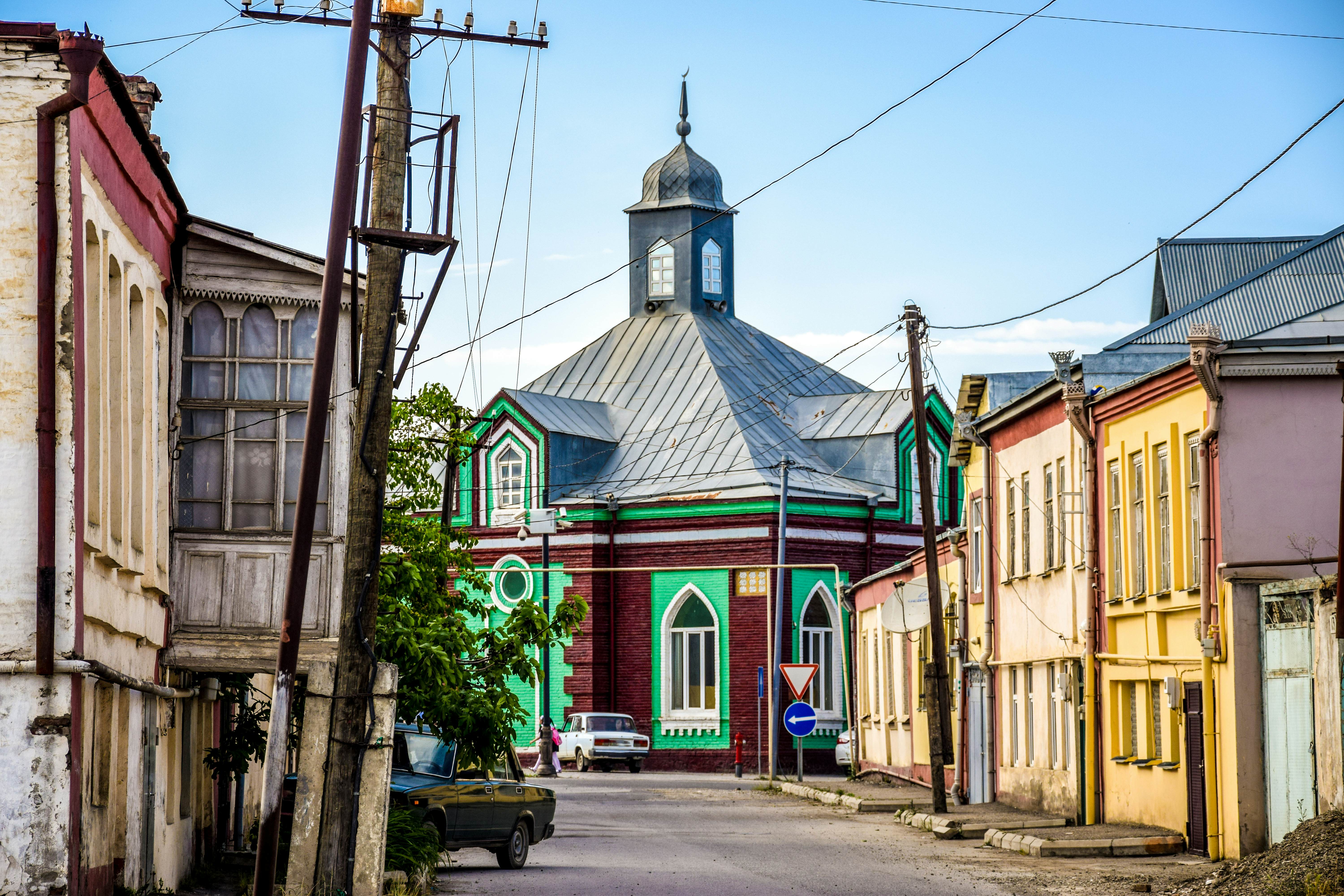
4. Quba
Best for discovering Azerbaijan's cultural tapestry
Sitting at approximately 600m (1970ft) above sea level, under the shadow of the massifs forming the eastern section of the Greater Caucasus, Quba is the main settlement in northeastern Azerbaijan. It’s a famous carpet-weaving center whose culture has been shaped by the languages, customs and beliefs of the many ethnic groups that settled in the area over the centuries.
Today, Quba is primarily visited by visitors as a jumping-off point for the rugged mountain trails crisscrossing Shahdag National Park, but downtown sights like Nizami Park, the distinctively Central Asian-style Sakina Khanum Mosque, and the Quba Genocide Memorial Complex make it worth a visit in its own right. Walking around the tidy grid of streets at Quba’s core is an enjoyable way to discover this unshowy northern city.
5. Sheki City
Best for Silk Road palaces
Azerbaijan’s most charming town sits amid forested slopes in the country’s mountainous northwest, on the long road that connects Baku to the border with Georgia. Twentieth-century industrialization transformed Sheki into a busy silk-weaving hub, but the city retains its historic character, offering visitors a window into the past in the form of ancient brick minarets, caravanserais and royal palaces.
Added to the UNESCO World Heritage list in 2019, Sheki’s historic center is home to one of Azerbaijan’s most eye-catching royal residences, the Palace of Sheki Khans. Other important royal sites include the Shakikhanovs’ Palace and Sheki Kahn’s Mosque & Cemetery.
Planning tip: As you enter the Palace of Sheki Khan through its main gate, you’ll find a covered market - an interesting place to buy traditional Azeri crafts. 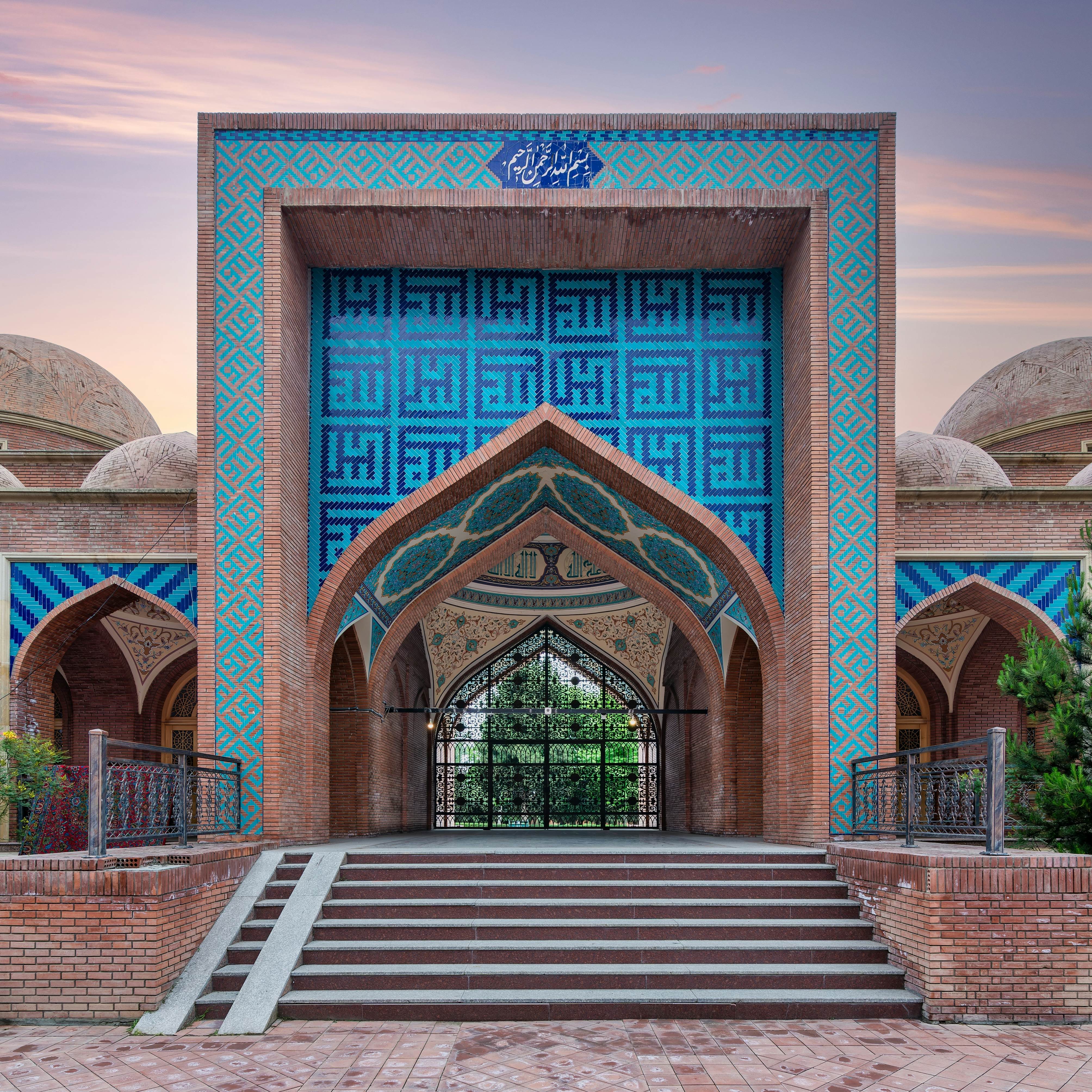
6. Ganja
Best for interacting with local people
In the west of the country, Ganja is Azerbaijan’s third-largest city by population. As you approach from the east via the highway from Baku, you’ll notice the towering mausoleum of the 12th-century Azeri poet Nizami and the Khamsa Monumental Complex – dominated by a series of 30ft-tall sculptures of books standing along the highway – before you reach the red-brick gate welcoming visitors into the city.
After passing these unique landmarks, you’ll find an even more striking architectural oddity inside the city. The two-story residence known as the “Bottle House” was constructed in 1967 by Ibrahim Jafarov, who clad the exterior with tens of thousands of glass bottles in various sizes in homage to his brother, who died in WWII.
For a different architectural style, check out the Alexander Nevsky Russian Orthodox Church, a 19th-century nod to Azerbaijan’s Byzantine past hidden on a narrow side street. Ganja’s architectural centerpiece is the broad square locked between Mustafa Kemal Ataturk Ave and Shah Ismayil Khetayi Ave, collecting together some of the inner city’s most important landmarks.
At the southern end of the square, the facade of the Ganja State Philharmonic Hall stands in front of central Ganja’s main religious building, the Juma Mosque. The red-brick architecture of the mosque and its twin minarets is reflected in the nearby Javad Khan Mausoleum and the Chokak Hamam.
Planning tip: The center of Ganja is easily walkable and most sights can be reached on foot without any difficulties. Inexpensive trains run from Baku to Ganja, completing the journey in less than four hours. 
7. Lankaran
Best for discovering the flavors of Azerbaijan
Travelers who dedicate a few days to Lankaran (Lənkəran) will have a chance to encounter the intense flavors of the fruit and vegetables grown in the subtropical south, and hear people speak in the Persian-influenced Talysh language, a reminder of the period when southern Azerbaijan was ruled by Persian sultanates.
The title of “resort city” doesn’t really do Lankaran justice – while the coast here is lined with black-sand beaches, this is also the center of Azerbaijan’s tea industry and visitors can immerse themselves in barely mapped natural parks boasting some of the country’s highest levels of biodiversity.
Lankaran is famous throughout Azerbaijan for its tea, which is sold in numerous shops in the city center and at local markets. Azeri tea is typically brewed in a ceramic pot and diluted with hot water from a Russian-style samovar (water heater).
The sprawling farmland surrounding the city has long functioned as Azerbaijan’s breadbasket thanks to its fertile soils and wet, subtropical climate. The best place to get a sense of Lankaran’s agricultural richness is in the city's bustling bazaar, where hundreds of vendors gather daily.
Detour: Located on the plains between Baku and Lankaran is Shirvan National Park, known for its large gazelle population and excellent bird watching. It’s possible to reach the park by public transport but it’s much easier to visit with a chartered car and driver.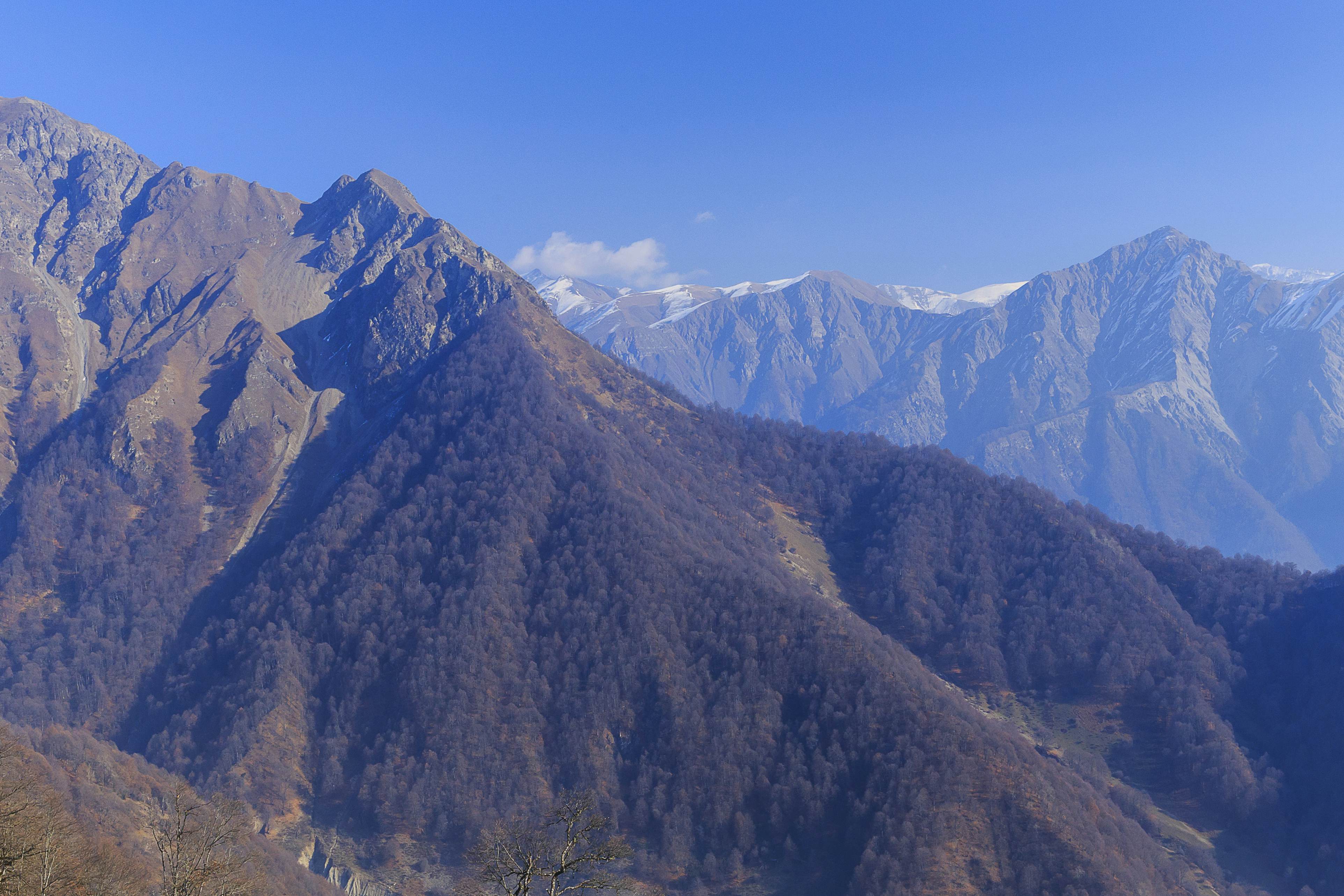
8. Gabala
Best for an adrenaline rush
Gabala (Qəbələ) is a peaceful town at the foot of the Greater Caucasus, where garden teahouses and luxury resorts serve as the stepping-off point for mountain adventures. Before you head for the hills, visit the town’s ancient ruins, its imposing modern mosque, its many open-air teahouses and the Gabaland Amusement Park (Azerbaijan’s best family theme park).
In summer, trails through the Greater Caucasus offer excellent hiking opportunities. For yet more dramatic scenery, head to Laza in the north, where hiking trails run along the river, offering splendid views of the mountains.
In winter, most people come to Gabala to hit the slopes around the Tufandag Mountain Resort. At any time of year, the four-station cable car provides access to slopes at 1920m (6300ft), where you can walk, spot wildlife or sit and admire the beautiful scenery of the Greater Caucasus with an expensive coffee in hand.
Detour: South of Gabala you can find the Savalan Winery, offering daily tasting tours. Visit as part of an excursion to the site of Old Gabala, where archaeological remains and a small museum explore the history of a settlement believed to date back to the 4th century BCE.
9. Göygöl National Park
Best for road-tripping and hiking
Just south of the town of Göygöl, about an hour’s drive from Ganja, Göygöl National Park is a popular destination in spring and summer. Sharing a pot of çay (tea) in the cafe by the Göygöl Lake Resort is a good warm-up for its lake and mountain adventures.
The must-see here is Lake Göygöl (literally translating to “Blue Lake”) – a mirror-like body of water forming the epicenter of the national park. You’ll enjoy photo-worthy vistas while strolling around the lakeshore, but it’s hard to beat the views from the top of Mt Kyapaz, which rises to 3066m (10,100ft).
The summit trail begins at the foot of the mountain in the abandoned village of Başqışlaq, a relic of the first Azerbaijan–Armenia conflict. The route to the top is steep but straightforward, zigzagging through massive rocks and scrubby vegetation to reach the summit, with an elevation gain of approximately 600m (1969ft).
Planning tip: The climb up Mt Kyapaz takes about three hours, but getting to the summit will require a permit, a guide and a long off-road drive to the start point, so it’s easiest to make arrangements through a Baku tour agency. 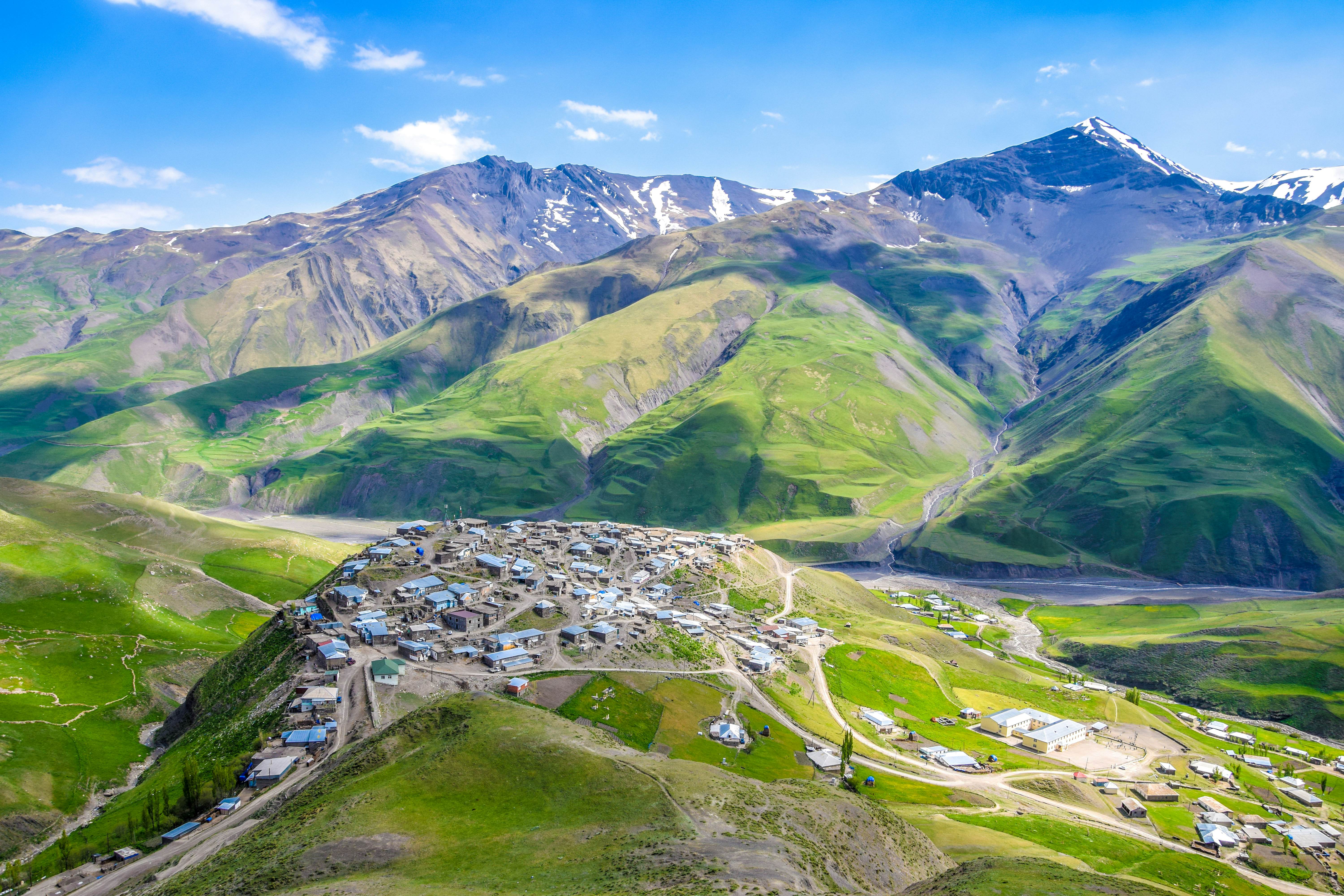
10. Xınalıq
Best for immersion in beautiful landscapes
A single, bending strip of asphalt running between the rocky faces of tall mountains and along terror-inducing cliffs ends at the little village of Xınalıq (Khinaliq), the highest permanently inhabited settlement in Azerbaijan.
Terraced stone houses that have been occupied for centuries by Ketsh-speaking, Sunni Muslim shepherds form the nucleus of this ancient settlement, surrounded by the glorious Caucasus peaks that are the area’s big attraction.
Isolation has allowed ancient customs to survive in this isolated community, and a small ethnography museum set inside a castle-like structure traces the village’s rich history through craft objects and artifacts.
For an easy introduction to the area’s rugged yet pristine landscapes, follow the Xınalıq–Galakhudat trail, a scenic, 8km (5-mile) hiking route that runs along the Qudiyalçay River.
Detour: Around 5km (3 miles) from Xınalıq, you can find a remarkable ateshgah (“house of fire” in Persian). This is likely the world’s highest Zoroastrian temple – a square structure topped by a small pyramid covering a naturally burning, methane-fuelled flame. A dirt road runs from Xınalıq to the temple, but to visit, you’ll need to obtain a special permit via a hiking tour agency.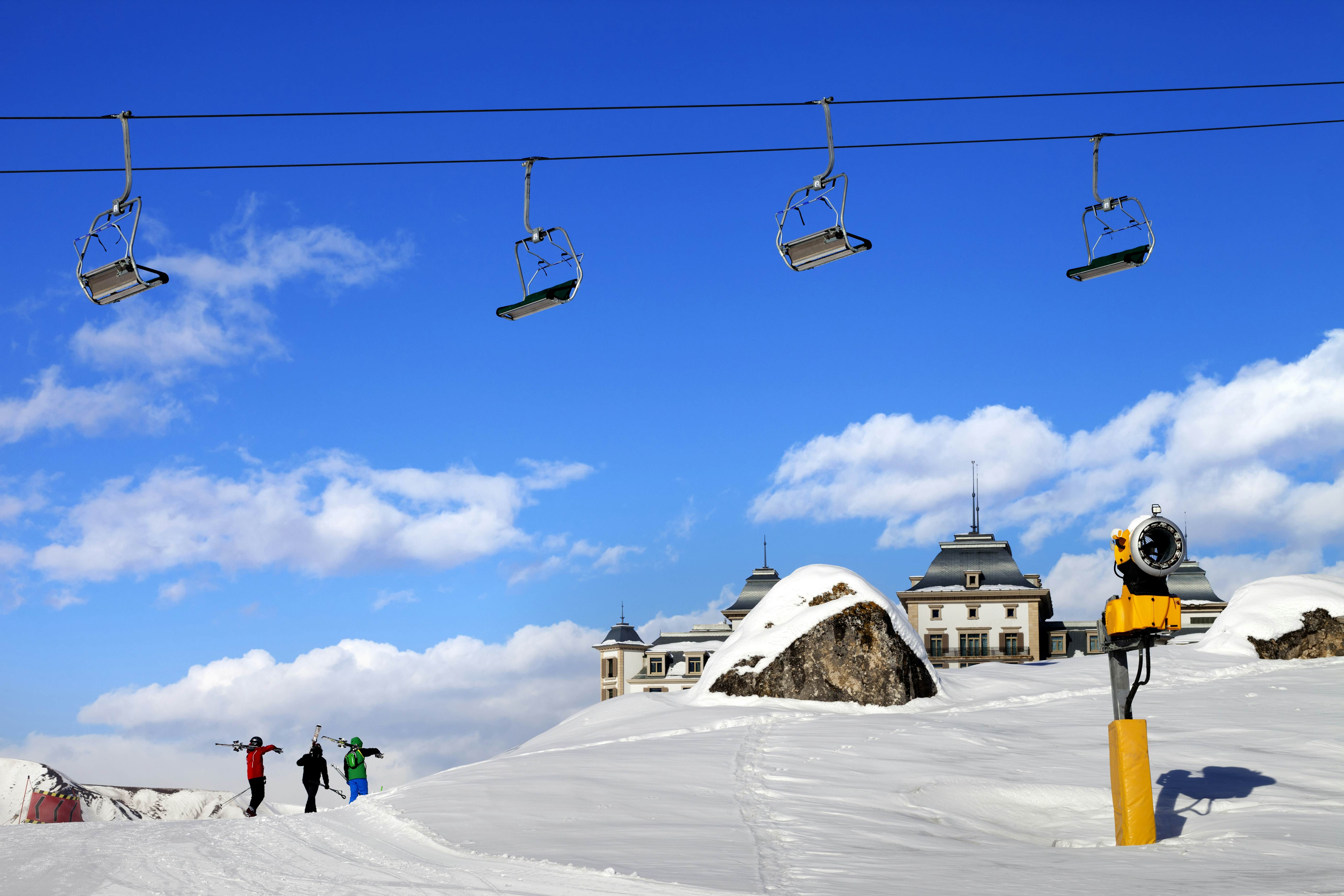
11. Shahdag National Park
Best for skiing and mountaineering
Bordering Russia and covered in snow for much of the year, Shahdag National Park is home to many of Azerbaijan’s tallest peaks. It’s a rugged destination for summertime mountain adventures and winter skiing.
Azerbaijan’s largest ski resort, Shahdag Mountain Resort,
is a popular winter destination, featuring nearly 30km (19 miles) of
slopes that tend to be much less crowded than ski resorts in more
established ski resorts elsewhere in Europe.
The resort village features spas, five-star accommodation, and a dozen bars and restaurants. For a break from the ski slopes, go zip lining, paragliding or ride the Shahdag Coaster, a bobsled-like track ride. For a gentler experience, you can enjoy snow tubing, trekking, horseback riding and many other summer and winter activities.
Adventurers from across the world are drawn to Shahdag National Park by its impressive peaks. Iconic summits rise to over 3700m (12,140ft), including Mt Bazardüzü, Mt Babadağ, Mt Şahdağ, Mt Tufandağ, and President’s Mountain. Many visitors come to Azerbaijan specifically to climb these stunning mountains on organized expeditions.
Planning tip: Since much of the national park sits in a sensitive border zone, trekking many of its routes requires a special permit. An off-road vehicle is necessary to access the park’s interior, so it’s best to make arrangements through a trekking agency.
12. Hirkan National Park
Best for getting back to nature
Home to the critically endangered Caucasian leopard and the endemic Persian ironwood tree, Hirkan National Park is a fascinating section of the Talysh Mountains – an area as humid as it is biologically diverse. The only way in is on foot, following unmarked paths connecting the isolated Talysh settlements that have existed in the region for centuries.
With a guide, you can hike through dense forests for 14km (8.7 miles) from Sim to Istisu, passing by the peaceful Sim Waterfall, or ascend Ballı Qaya Hill for spectacular views of the surrounding Talysh Mountains. After a long hike, unwind in the hot springs of Istisu, where you can enjoy a relaxing soak in the village's private or public bathhouses.
Planning tip: The best time to visit Hirkan National Park is in spring or autumn when the temperatures are still bearable; summer can bring uncomfortable heat and humidity. Stay at the friendly, rustic Sim Guesthouse, in the heart of the Hirkan scenery.
































































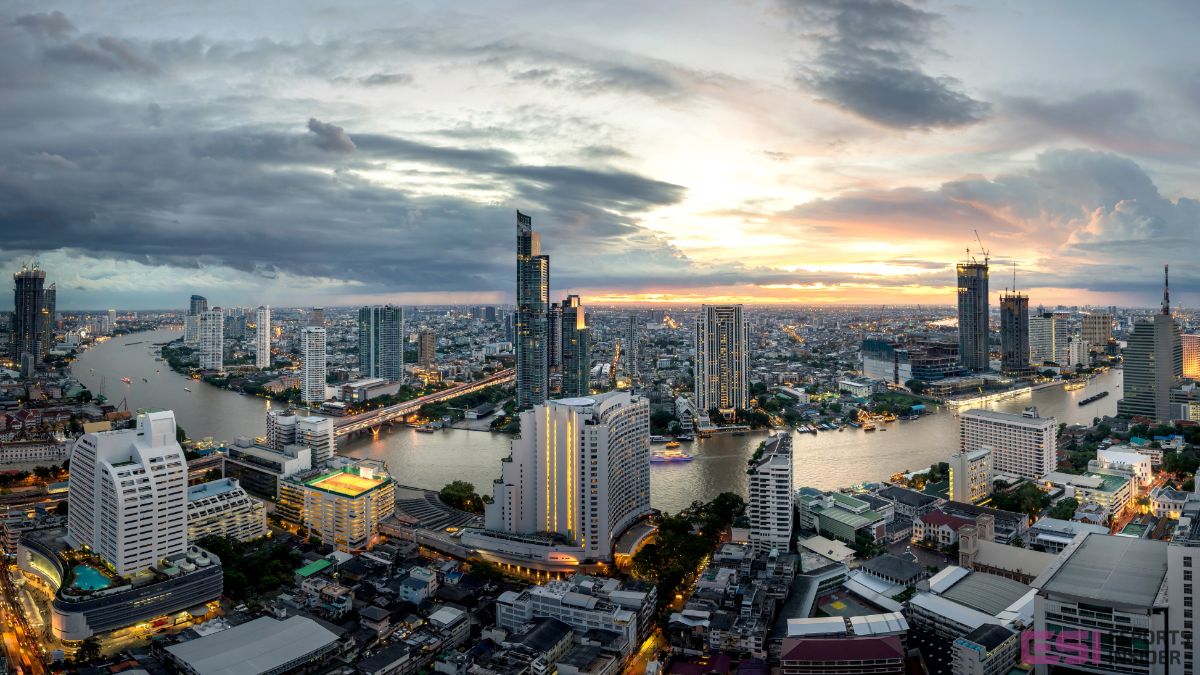



.png?width=1920&height=1920&fit=bounds&quality=70&format=jpg&auto=webp#)























